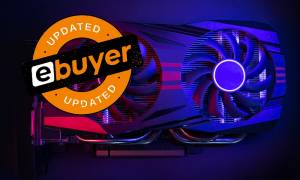What’s The Best Option? Conventional Fans or Liquid Cooling Systems, Open or Closed Loop?
Last month we brought you nifty tips and tricks about keeping your PC cool. Some of you asked us to go one step further, so this month we’ve been busy comparing the different options out there. We’ve taken a closer look at three types of cooling from plain old fans, to liquid cooling, both open and closed loop systems. See our verdict and join the debate.
Why is PC cooling important?
Heat can put stress on your computer’s components, especially the CPU and GPU, resulting in a slower performance, frustrating crashes and brain numbing freezes. Not only does overheating shorten the lifespan of your PC, in the worst cases it can also lead to physical damage of plastic components and wires.
Poor thermal design can impact on cooling efficiency, with thick cable bundles restricting air flow channels, or blocking fans. Conductivity can also affect heat cooling and dispersion. While something as simple as the fan facing the wrong way can dramatically reduce your PCs cooling ability. And let’s not forget that silent danger, dust. It acts as an insulator, clinging to electrical components to clog them up and trap the heat.
So, with a couple of ways to transfer heat from inside your unit to the outside world, we took a look to decide which is the best.

Browse Ebuyer for CPU fan and water coolers
Air cooling pros and cons
Air cooling is all about using fans to draw the heat away from your components and expelling it through the case exhaust. Heatsinks, which are large plates of conductive metal also assist the process. Strategically placed around the front, rear, top and sides of the machine, fans make sure cool air circulates the major components while warm air is driven out. Laptop fans work on the same principle of circulating air and expelling heat.
Another important thing to consider is negative vs positive pressure cooling. In a positive pressure configuration, the CFM from intake fans is greater than that of the exhaust fans, ensuring every opening in the case works towards helping air and dust escape to keep the system cool. It does have drawbacks though, as it only offers average cooling and graphics cards with Direct Heat Exhaust kind of counteract the effect.
Negative pressure systems mean the CFM from the exhaust fans are stronger than the intake fans, which creates a mini, partial vacuum inside the case. Great for cooling performance as it amplifies convection and works well with the DHE graphics card, but this option has a tendency to draw cooling enemy number 1: Dust.
Our summary
Air cooling does the job pretty well. It’s easy to install and a decent price but fans can be noisy and if you want your PC to run quicker or are using high-end hardware a fan might just fall short. Chips that have been overclocked might also struggle to keep cool. With a higher conductivity than air and the ability to absorb more heat, liquid or water cooling could be a more efficient choice.
Water cooling made easy!
Water cooling has two types of systems to choose from. Closed Loop and Open Loop systems. They both work using the principle of thermodynamics, which is the concept of heat moving from warmer objects to cooler objects. It basically circulates distilled water through waterblocks, cooling the air as the cool water passes through. This cool water warms up as the heat is transferred. Once it reaches the radiator it warms the air surrounding the radiator. Fans then draw that warm air away from the exterior of the radiator causing the water inside to cool again, ready to be re-circulated.
Browse Ebuyer for case fans
Closed Loop Water Cooling in a nutshell
Closed loop water cooling systems offer loads of benefits. They’re cheaper and easier to install than open loop systems and need next-to-no maintenance. Designed with an integrated fan and a CPU block they come ready to fit out of the box and can seamlessly integrate into an existing fan cooling system without the upheaval of practically rebuilding your entire PC. Easy. Compared to open loop systems, they’re a tad less efficient, but it’s marginal.
Open Loop Water Cooling Explained
Get ready for total freedom. You can fully customise your water cooling system with an open loop set up. Designed to enhance the aesthetics of your system to pretty impressive standards. You can add to, extend and change as you like, but the drawbacks are that it can leak if you’re not pretty adept with this kind of tech. It also needs regular maintenance, like topping up or changing the cooling fluid and if you forget, it can result in damage to the radiator block or pump. So it’s more adaptable but needs more expertise.

The Verdict for PC cooling
It’s a close call to be honest, but we think air cooling just clinches the winning spot in terms of PC cooling. But that’s just our opinion. With such closely rated cooling systems, it’s really down to personal preference, the complexity of the system you have and your available time, expertise and budget for installation and continued maintenance.
Browse Ebuyer for fan controllers
Price: Both liquid cooling systems are more expensive than air cooling but the boost in performance can easily justify the cost for an enthusiast.
Set up and maintenance: The air cooling system comes out on top here with no maintenance and easy installation.
Reliability: Both liquid options are slightly less reliable than air cooling, as there’s only really the fan to go wrong with air cooling.
Noise levels: Both air and liquid systems appear to be equal in acoustics, with no outright winner being crowned the King Of Quiet.
Complexity: The air cooling system wins hand-down as a much simpler choice.
Performance: Both liquid options offer marginally better performance and some would argue better aesthetics than air cooling
Browse Ebuyer for thermal compounds





















